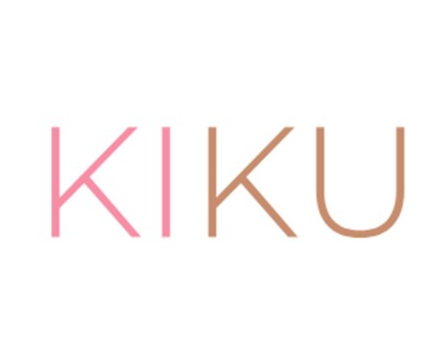Japan’s design heritage is steeped in meaning, symbolism, and exquisite craftsmanship. From geometric shapes inspired by nature to floral motifs tied to ancient beliefs, traditional Japanese patterns known as wagara have transcended centuries. These designs, once found on kimono and family crests, now grace the pages of notebooks, letter sets, envelopes and washi tapes.
Let’s dive into the cultural richness of these patterns and discover how they live on through the world of paper stationery.
Geometric Patterns
1. Seigaiha (Blue Ocean Waves)
Meaning: This pattern of concentric, overlapping arcs symbolizes waves in the ocean. It represents peace, strength, and eternal good fortune.
In Stationery:
- Midori Seigaiha Letter Sets: Elegant cream paper with navy blue wave motifs.
- Redbubble Notebooks Modern reinterpretations with bold blue hues and gold accents.
- Classiky Washi Tapes: A minimalist take using classic indigo.

2. Shippō (Seven Treasures)
Meaning: Overlapping circles form star- or petal-like shapes, symbolizing harmony, happiness, and the seven treasures of Buddhism.
In Stationery:
- Cohana Sakura 2025 Stationery Set: A premium collection using shippō motifs in pink and gold foiling.
- Traveler’s Company: Inserts Subtle shippō backgrounds for daily journaling.

3. Tachiwaki / Tatewaki (Rising Steam)
Meaning: Curving lines that symbolize rising stea used historically in Heian-period court kimonos, suggesting grace, aspiration, and transcendence.
In Stationery:
- Haibara Folding Letter Paper: Creamy textured paper with silver ink Tatewaki lines.
- Kokuyo Campus Limited Editions: Paired with cloud motifs for a serene look.

4. Karakusa (Winding Plant)
Meaning: Introduced via the Silk Road, this vine-like arabesque represents longevity, prosperity, and resilience.
In Stationery:
- Furoshiki-Inspired Notebooks Covers mimic the classic Karakusa furoshiki design.
- MD Washi Tapes A green vine variant perfect for wrapping or borders.

Other Traditional Geometric Patterns
- Asanoha (Hemp Leaf): For strength and growth; common on children's items.
- Kikkō (Tortoiseshell): Symbolizing longevity; found on armor and modern planners.
- Ichimatsu (Checkered): Iconic due to kabuki and now anime; perfect for bold journals.
- Same Komon (Shark Skin): Tiny arcs creating textured effects; used in textured cards.
- Yagasuri (Arrow Feathers) :For direction and commitment; ideal for graduation-themed stationery.

Floral Motifs
1. Kiku (Chrysanthemum)
Meaning: The imperial flower of Japan, symbolizing rejuvenation and longevity.
In Stationery:
- Hyakka Letter Set (Haibara): Traditional chrysanthemum and arabesque pattern in soft hues.
- Tsuruya Kiku Notebooks: Embossed gold chrysanthemum crests on kraft covers.

2. Sakura (Cherry Blossom)
Meaning: One of Japanese most iconic flower, it stands for the transient beauty of life.
In Stationery:
- NotebookTherapy “Sakura Days” Collection: Pink-themed journals, stickers, and washi.
- Midori Sakura Letter Paper Includes translucent sakura-shaped seals.

3. Botan (Peony)
Meaning: Known as the “king of flowers” in Japan, it represents prosperity and feminine beauty.
In Stationery:
- Botan Washi by Kamio Japan: Rich colors and gold-lined petals.
- Peony Journal by Paperblanks: A modern twist with a vintage Japanese feel.

4. Ume (Plum Blossom)
Meaning: The first flower to bloom in spring; symbolizes renewal and inner strength.
In Stationery:
- Ume Memo Pads by Furukawa Shiko: Delicate blossoms with pale ink backgrounds.
- Midori Money Envelope: Colorful Japanese wedding gift.

5. Tsubaki (Camellia)
Meaning: Associated with love and devotion. Red camellia = romance; white = purity.
In Stationery:
- Midori Message Letter Red and White Camellia: seasonal greeting card features winter flowers in bold compositions.
-
Washi Stickers by Mindwave: Includes red and white blooms with gold accents.

6. Shoubu / Hanashoubu (Iris)
Meaning: Symbol of protection, purity, and resilience, especially in Boys’ Day traditions.
In Stationery:
- Seasonal Iris Washi Tapes: Typically featured in May-themed collections.
- Ink-Pressed Iris Journals: Textured covers from Japanese artisan makers.
7. Hanabishi (Diamond Flower)
Meaning: Derived from stylized chestnut flowers, often found on samurai crests.
In Stationery:
- Classic Pattern Envelopes by Natori: Printed in indigo on rice paper.
- Washi Strips from The Washi Station: Simple yet elegant diamond patterns.

8. Asagao (Morning Glory)
Meaning: Represents fleeting love and the impermanence of beauty.
In Stationery:
- Asagao-Themed Journals by Sanby: Embossed on linen covers.
- Illustrated Letter Sets from Kyoto Japan: Feature morning glories in watercolor.
9. Ginkgo (Ichō)
Meaning: An ancient tree symbolizing endurance, longevity, and peace.
In Stationery:
- Autumn Ginkgo Notebook by Delfonics: Vibrant yellow ginkgo leaves on navy covers.
- Ginkgo Leaf Postcards: Letterpress printed, often used for seasonal greetings.

Whether in ancient samurai crests or your favorite notebook cover, traditional Japanese patterns carry stories of hope, resilience, and elegance. Paper stationery, as both a practical tool and a canvas for beauty, becomes a bridge connecting us to centuries of design wisdom.

From Seigaiha waves to Kiku petals, these motifs offer not just visual beauty but timeless meaning turning every letter, journal page, or sticky note into a quiet homage to Japanese culture.

